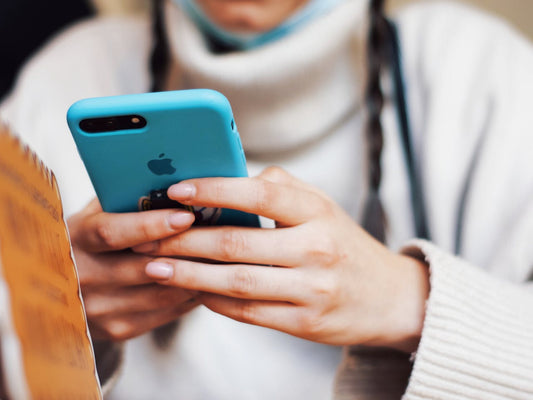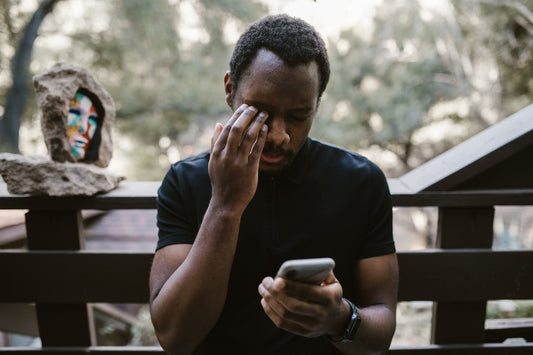Disclaimer: Content is created by humans, AI, or a mix of both. Reader discretion is advised.
Emojis have become an integral part of digital communication, transcending age, gender, and cultural boundaries. While emojis were initially considered more popular among younger audiences or women, they have evolved into a universal language that everyone uses—including men. In this article, we’ll explore why guys use emojis, what their choices might signify, and how they contribute to modern communication.
What Are Emojis and Their Purpose?
Emojis are small digital icons or symbols that represent emotions, objects, or concepts. They were introduced to enhance text communication, allowing users to express tone, emotion, or context that plain text often fails to convey.
The primary purpose of emojis is to add nuance, humor, or sentiment to messages, helping users express themselves more vividly. They fill the gaps in digital communication by mimicking facial expressions, gestures, and emotional cues present in face-to-face interactions.
Breaking Gender Stereotypes: Emojis Aren't Just for Women
One misconception about emojis is that they are more suited to or favored by women. This stereotype has faded as people recognize that emojis are a universal tool. Men have embraced emojis for various reasons, such as expressing emotions, adding humor to conversations, or creating a friendly tone in otherwise formal interactions.
Contrary to outdated beliefs, many guys use emojis to enhance their communication, demonstrating that emotional expression isn’t gender-specific.
Reasons Guys Use Emojis
1. To Express Emotions
Text messages often lack the emotional nuance of spoken communication. Emojis allow guys to convey feelings that might be challenging to express in words. For instance, a heart emoji can show affection, while a laughing face can convey amusement.
Emojis provide a safe and non-verbal way for men to show their emotions without feeling vulnerable or judged. This can be particularly important in societies where traditional masculinity norms discourage overt emotional expression.
2. To Add Humor and Playfulness
Many men use emojis to inject humor or playfulness into their messages. A winking face or a silly emoji can turn an otherwise dull message into something more engaging and entertaining.
For example, instead of simply saying “Nice try,” a guy might add a smirking face emoji to convey playful sarcasm. Emojis can help soften potentially harsh words, making conversations more enjoyable.
3. To Simplify Communication
Emojis can convey complex thoughts or emotions in a single icon, saving time and effort. Guys often use emojis as a shorthand for expressing themselves quickly and efficiently.
For example, a thumbs-up emoji is a universal way to say “I agree” or “Well done” without typing out a sentence. This simplicity is especially appealing in fast-paced conversations.
4. To Build Connection and Rapport
Using emojis can make messages feel more personal and relatable. Guys might use emojis to build rapport with friends, family, or romantic partners. A well-placed emoji can make a message feel warm and thoughtful, helping to strengthen relationships.
For example, sending a heart or a smiling face emoji in a romantic context can enhance emotional connection and show care or affection.
5. To Avoid Misunderstandings
Text-based communication is often prone to misinterpretation due to the lack of tone and body language. Emojis help clarify intent and prevent misunderstandings.
For instance, adding a laughing emoji after a sarcastic comment ensures the recipient understands the humor. Similarly, a sad face emoji can emphasize empathy or concern in serious discussions.
6. To Stay Relevant in Digital Culture
As emojis are a significant part of modern communication, men who use them can stay relevant and adapt to evolving social norms. Emojis are especially prevalent in younger generations, and using them demonstrates an understanding of contemporary communication trends.
Common Emojis Guys Use and What They Mean
1. Thumbs-Up 👍
This emoji is frequently used by men to signify agreement, approval, or acknowledgment. It’s straightforward, efficient, and neutral, making it a go-to choice for many.
2. Smiling Face 😊
A smiling face emoji often conveys friendliness, happiness, or gratitude. It’s a versatile emoji that guys use to make their messages warm and approachable.
3. Heart ❤️
Though some may think heart emojis are reserved for romantic conversations, many men use them to show affection or appreciation in both platonic and romantic contexts.
4. Laughing Face 😂
The face with tears of joy emoji is a popular choice for men to express laughter or amusement. It’s often used to react to jokes, funny stories, or humorous situations.
5. Winking Face 😉
The winking face adds a playful or flirty tone to messages. Guys might use it to indicate sarcasm, a joke, or romantic interest.
6. Muscle Flex 💪
This emoji represents strength, determination, or encouragement. It’s a favorite among fitness enthusiasts or those wanting to convey motivation.
The Role of Emojis in Romantic Relationships
In romantic contexts, emojis can play a significant role in expressing emotions and creating intimacy. Guys might use emojis to flirt, show affection, or communicate subtle messages that words alone cannot convey.
For instance, a string of heart emojis might express deep affection, while a winking face can add a playful, flirty touch to conversations. Emojis can make interactions more exciting and help keep the spark alive.
Emojis in Professional Settings
While emojis are more common in casual conversations, many men use them in professional communication when appropriate. Emojis can help convey friendliness or soften the tone of a message in work emails or group chats.
For example, a thumbs-up emoji can quickly acknowledge a task’s completion, and a smiling face can make feedback appear constructive rather than harsh. However, the choice and frequency of emojis in professional contexts depend on the workplace culture and the nature of the relationship with colleagues.
Do Guys Use Emojis Differently Than Women?
While the reasons for using emojis are often similar across genders, research suggests there may be subtle differences in how men and women use them. Women are generally more expressive with emojis, often using them to enhance emotional connection and social bonding.
Men, on the other hand, may use emojis more sparingly and with specific intent, such as humor, clarification, or acknowledgment. These tendencies reflect broader communication styles rather than strict rules.
Challenges and Misconceptions
Despite the widespread use of emojis, some men hesitate to use them due to concerns about appearing less masculine or professional. This hesitation often stems from outdated stereotypes associating emotional expression with femininity.
Additionally, overusing emojis can lead to misinterpretation or annoyance, especially in professional settings. Striking the right balance is key to ensuring effective communication.
Tips for Using Emojis Effectively
1. Understand the Context
Always consider the context of the conversation before using emojis. What works in a casual chat with friends may not be suitable for a formal email or a work-related discussion.
2. Use Emojis to Enhance, Not Replace
Emojis should complement your message rather than replace it entirely. Avoid sending messages composed solely of emojis, as this can lead to confusion.
3. Know Your Audience
Different people interpret emojis in various ways. Be mindful of your audience’s preferences and communication style to ensure your message is well-received.
4. Avoid Overuse
While emojis can add flair to your messages, overusing them can dilute their impact or make your communication appear unprofessional. Use them sparingly and purposefully.
Conclusion
Emojis have revolutionized the way we communicate, adding depth, emotion, and nuance to digital interactions. For guys, using emojis is a practical and effective way to express emotions, build connections, and stay relevant in a digitally-driven world.
Far from being a sign of weakness or frivolity, emojis demonstrate adaptability and emotional intelligence. By embracing this versatile communication tool, men can navigate personal and professional relationships with greater ease and clarity.
Whether it’s a thumbs-up for approval, a laughing face for humor, or a heart for affection, emojis have something for everyone—and guys are no exception. So, the next time you see a guy using emojis, remember: it’s not just about the symbols; it’s about the connections they help create.


